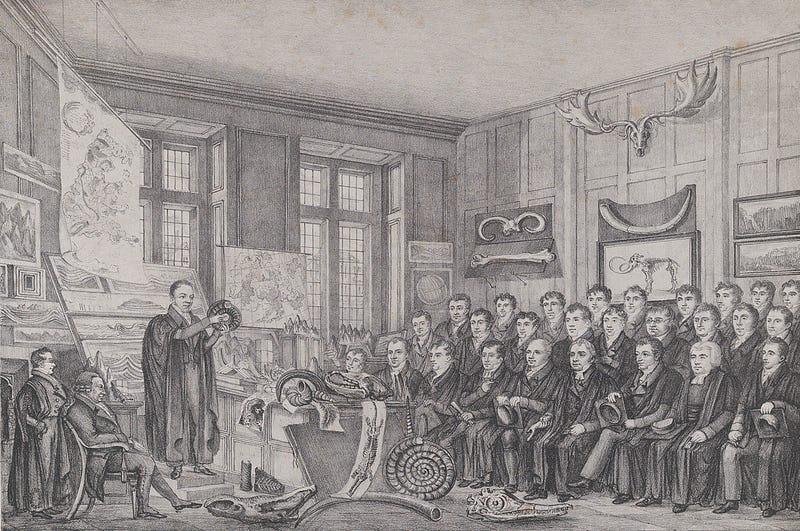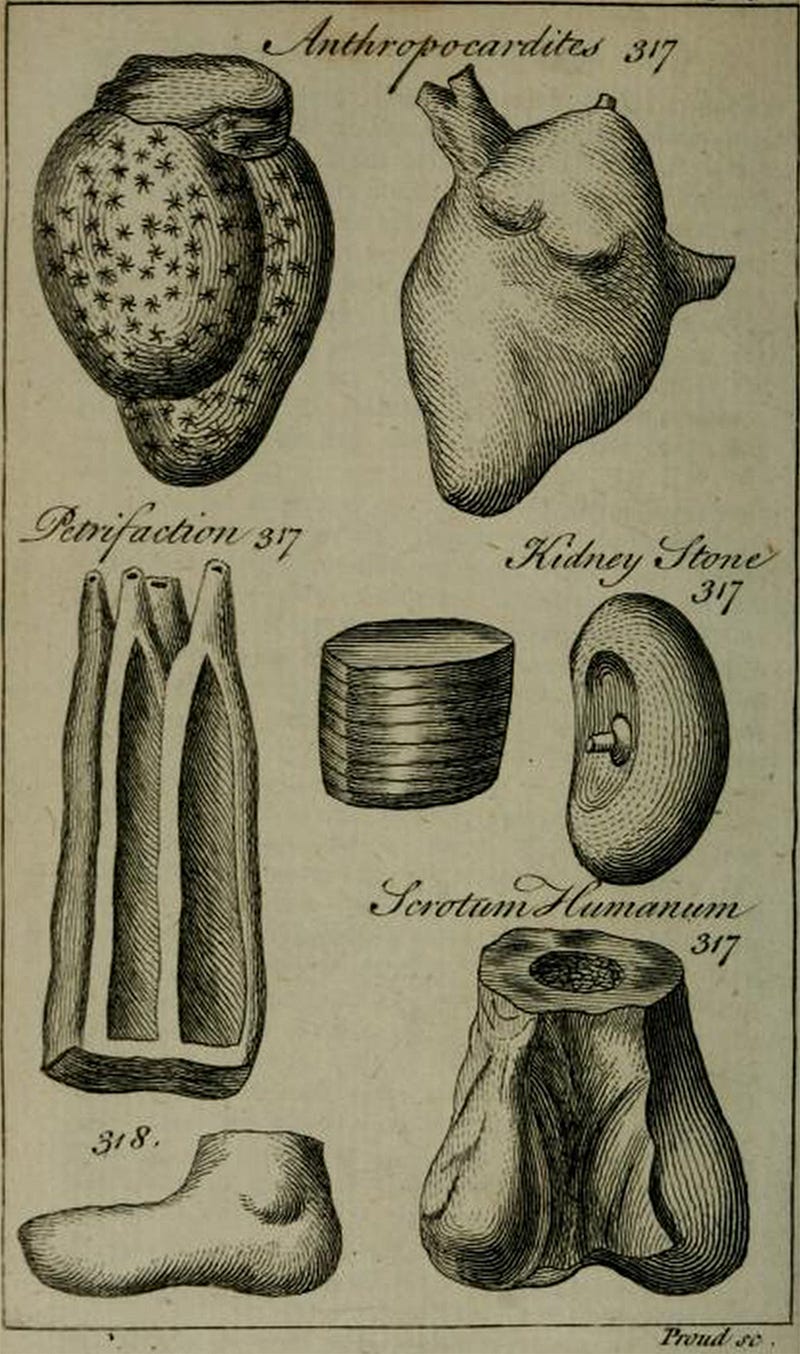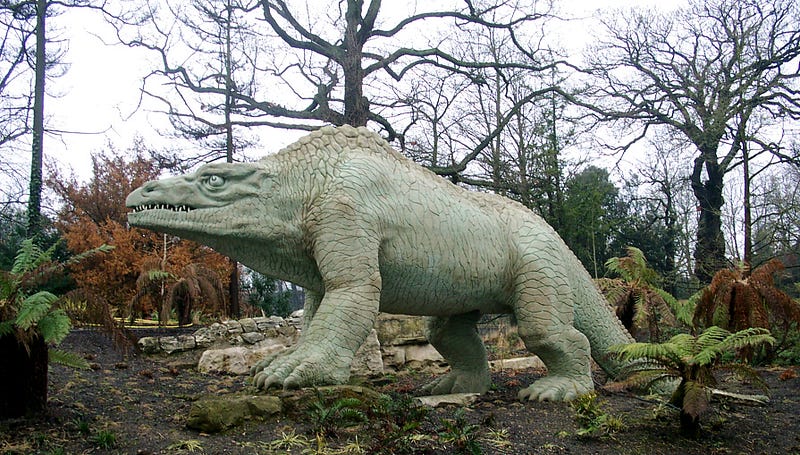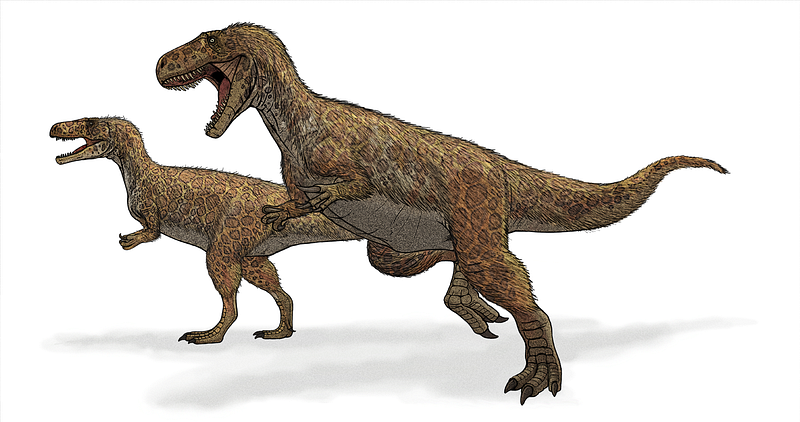The Intriguing Tale of Dinosaurs: From Scrotums to Megalosaurus
Written on
Chapter 1: The Curious Naming of a Dinosaur
The story of how the first dinosaur was nearly named after human anatomy is quite extraordinary. In 1970, British paleontologist Lambert Beverly Halstead published a paper advocating for the dinosaur to keep its original name, Scrotum humanum (human scrotum). According to the rules set by the International Commission of Zoological Nomenclature, he claimed this was the proper designation. Despite opposition from fellow paleontologists, the commission ultimately upheld the original name in the 1990s.
Imagine discovering a colossal, enigmatic bone in your backyard today. Many might suspect it to be a dinosaur fossil, given our access to the internet and frequent trips to museums. However, if we were to travel back two centuries in England, where the term "Dinosauria" was yet to be coined and information was primarily derived from the Bible, the interpretation would be vastly different. A massive bone might have been thought to belong to a giant, a mythical beast, or even a dragon, reflecting the beliefs of early fossil hunters who unearthed these gigantic remains.

For centuries, the origins of these enormous bones mystified everyone, from scholars to farmers. The ancient Greeks believed they belonged to legendary Amazon warriors, while in Mongolia, fossils of Protoceratops likely inspired the tale of the Griffin. In Europe, shaped by Biblical narratives, such finds were often seen as relics from the Old Testament.
The first significant step in understanding these bones as remnants of extinct reptiles, now categorized as dinosaurs, began with a giant femur discovered in Oxfordshire, England, in the late 1600s. Robert Plot, the first chemistry professor at the University of Oxford, illustrated this bone in his writings, speculating it might have belonged to a Roman war elephant or a giant man, echoing age-old Biblical stories.
Fast forward to 1763, when Richard Brookes named the bone Scrotum humanum, believing it resembled male human anatomy. Little did he know that his seemingly innocent interpretation would spark a naming saga, illuminating the difficulties of early paleontological classification.

In 1824, William Buckland, a geology lecturer at Oxford, described new fossil remains and named them Megalosaurus. This species was recognized as an exceptional ancient reptile, marking the first scientific classification of what we now understand as a dinosaur. However, the term "dinosaur" itself would not be coined until eighteen years later by Richard Owen, who classified these "fearfully great lizards" into a new clade distinct from modern reptiles and mammals. Owen’s discovery laid the groundwork for a new field of study that continues to captivate people.
Yet, the saga surrounding the name Megalosaurus took an interesting turn when paleontologists considered reverting to its original name due to scientific nomenclature rules. According to these rules, the first name given to a species must be retained, even if it originated from a partial bone. When discrepancies arise between different names for specimens belonging to the same species, the later name must be adjusted to match the earlier one.
However, the International Commission on Zoological Nomenclature clarified that since Scrotum humanum lacked a proper scientific description and the sole specimen had been lost, it did not fulfill the requirements for formal species naming. Consequently, Megalosaurus was spared the fate of a rather undignified and humorous title.

It’s essential to understand that this tale is not merely a quirky anecdote in the history of science. It underscores the complexities of paleontological research. Naming a dinosaur transcends simply assigning a label; it involves grasping the species' role in the ecosystem, its relations with other species, and its significance in the planet's history. This is not the first instance where a well-known dinosaur's name has been reconsidered in favor of an earlier designation (think of Brontosaurus or Triceratops).
Despite its tumultuous start in taxonomy, Megalosaurus played a pivotal role in the narrative of paleontology. It opened the door to recognizing dinosaurs and fueled public interest in these ancient creatures. The story of its naming also provides insight into the evolving science of paleontology, illustrating how our understanding of the natural world grows through discoveries and the careful process of classification. Kudos to the diligent taxonomists out there!

Our journey through paleontology, from misinterpreting dinosaurs as human giants or mythical beings to establishing a rigorous scientific framework, is as captivating as the creatures themselves. The story of Megalosaurus, the first named dinosaur, remains an essential chapter in this ongoing narrative, reminding us of our humble beginnings in the quest to uncover Earth’s prehistoric mysteries.
Chapter 2: Understanding Fossils and Their Significance
This video illustrates how to differentiate between fossilized bones and ordinary rocks, providing valuable insights for amateur paleontologists and enthusiasts alike.
In this engaging video titled "The Great Fossil Race: Uncovering Prehistoric Dinosaur Bones | Dino Hunt | Real Wild," viewers can join the adventure of unearthing dinosaur fossils while learning about the importance of paleontological research.